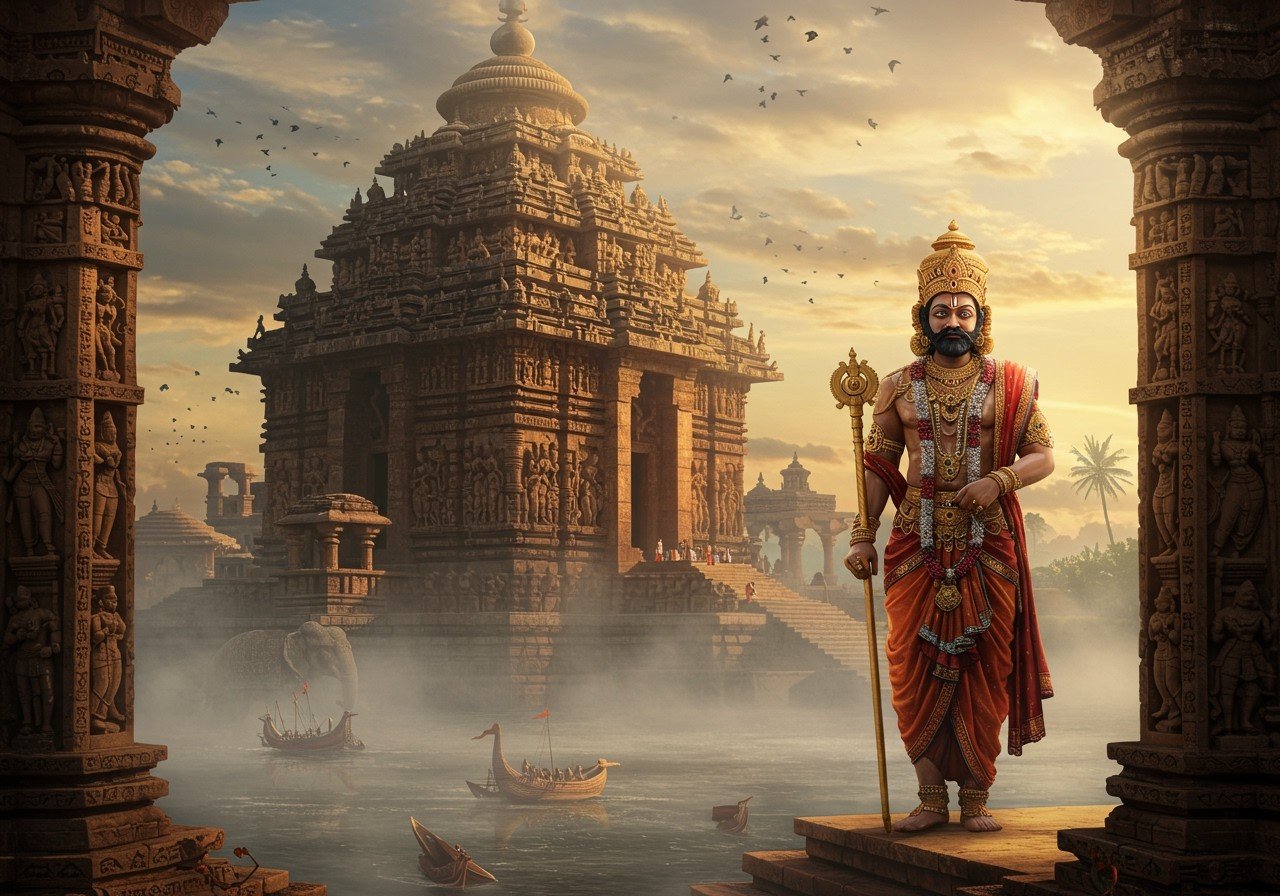
Delve into the captivating history and enduring legacy of the Eastern Ganga Dynasty, a pivotal era in Indian history that profoundly shaped the cultural and political landscape of Odisha and beyond. This guide offers detailed insights into the dynasty’s origins, prominent figures, and lasting impact, celebrating the rich traditions and heritage that have survived through the ages.
What Was the Eastern Ganga Dynasty?
The Eastern Ganga Dynasty, a prominent Hindu royal lineage also known as the Purba Gangas, Rudhi Gangas, or Prachya Gangas, reigned over the Kalinga region (present-day Odisha) and other parts of India from the 5th century to the mid-15th century. Their rule marked a significant period in Indian history, shaping the cultural, political, and architectural landscape of the region. The dynasty’s influence extended across Odisha, Tamil Nadu, Karnataka, Kerala, and Andhra Pradesh.
Their reign is divided into three distinct phases: the Early Eastern Gangas (493-1077 CE), the Imperial Eastern Gangas, and later periods. Indravarman I, recognized through the Jirjingi copperplate grant of 537 CE, stands as the first historically confirmed ruler. Their dominion in Kalinga concluded around 1434-35 CE. Key figures like Anantavarman Chodaganga played a vital role in consolidating and expanding the kingdom.
Key Aspects of the Eastern Ganga Dynasty
- Art and Architecture: The Eastern Gangas left behind magnificent architectural marvels, most notably the iconic Konark Sun Temple and the Jagannath Temple in Puri. These structures stand as testaments to their artistic prowess and engineering skills. Explore Odisha’s sacred sites and delve deeper into the architectural wonders of the Eastern Ganga Dynasty.
- Governance and Administration: The dynasty implemented a well-structured administrative system, contributing to the region’s stability and prosperity. Their governance model influenced subsequent rulers and left a lasting impact on the region’s political landscape. Discover more about the historical context of these temples and the dynasty’s influence.
- Trade and Economy: The Eastern Gangas fostered trade routes and economic growth within their territories. Their strategic location facilitated trade connections, contributing significantly to the region’s economic prosperity.Enhance your spiritual practices with authentic puja items from Poojn.in.
- Military Prowess: Known for their strategic military capabilities, the Eastern Gangas engaged in various conflicts, shaping the political dynamics of the region. Their military achievements played a crucial role in expanding and defending their territories.Explore the Yameshwar temples and their connection to the Eastern Ganga Dynasty.
- Religious and Social Policies: The dynasty predominantly promoted Hinduism while incorporating various religious practices. Their religious policies significantly influenced the social and cultural fabric of the region. Find exquisite murtis and other puja essentials at Poojn.in to enhance your worship.
The Reign of Anantavarman Chodaganga
King Anantavarman Chodaganga, a key figure in the Eastern Ganga dynasty, played a crucial role in consolidating and expanding the kingdom. His reign, spanning a significant period, witnessed substantial advancements in administration, military conquests, and cultural patronage. He is credited with commissioning the construction of the magnificent Jagannath Temple in Puri, a testament to his devotion and architectural vision.
Anantavarman’s legacy continued through notable successors like Narasimhadeva I, who further strengthened the dynasty’s position. The dynasty navigated a complex web of alliances and conflicts with neighboring kingdoms, shaping the political dynamics of the region. Anantavarman’s policies and achievements laid the groundwork for the dynasty’s continued influence in subsequent eras.
The Eastern Ganga Dynasty Timeline: Key Events
- Early Eastern Gangas (493-1077 CE): This period laid the foundation for the dynasty’s prominence, marked by territorial expansion and consolidation of power.
- Imperial Eastern Gangas: This era witnessed the dynasty’s peak influence, with significant architectural achievements and cultural flourishing.
- Later Periods: The later periods saw interactions with powerful empires like the Delhi Sultanate, eventually leading to the dynasty’s decline around 1434-35 CE.
The Cultural and Architectural Heritage
The Eastern Gangas left an indelible mark on India’s cultural and architectural heritage. The Konark Sun Temple, a UNESCO World Heritage Site, stands as a masterpiece of their architectural ingenuity. The Jagannath Temple in Puri remains a vital religious center, attracting pilgrims from across the globe.
Beyond architecture, the dynasty’s patronage extended to various art forms, including the development of Odissi dance and music. They also played a crucial role in preserving Sanskrit texts, contributing significantly to India’s literary heritage.
Explore other magnificent temples and their rich history through our blog.
Poojn.in: Connecting You to India’s Rich Cultural Heritage
Poojn.in, India’s leading online store for cultural and religious goods, offers a wide selection of products that connect you with the rich heritage of the Eastern Ganga Dynasty. Explore our collection of authentic puja items, intricately crafted idols, and traditional artifacts.
Bring home the divine with exquisite deities from Poojn.in.


